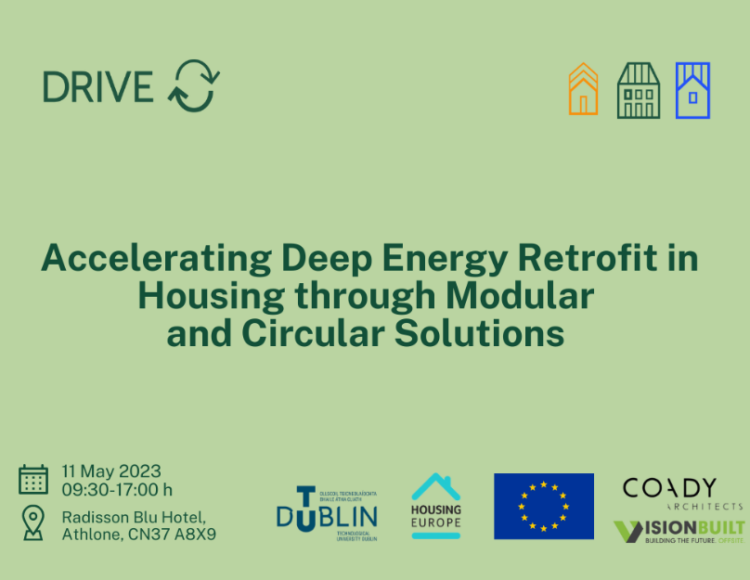Technological University Dublin and the Irish Drive 0 project partners, in association with Housing Europe, invite you to the conference ‘Accelerating Deep Energy Retrofit in Housing through Modular and Circular Solutions’ on the 11th of May at the Radisson Blu Hotel, Athlone.
This conference provides an opportunity to examine modular circular renovation and construction solutions in the Irish housing sector and share experiences and lessons learnt from completed Irish and EU pilot projects, which should be of interest to everyone involved in sustainable housing and buildings, notably professionals in building design, construction, manufacture and those involved in housing stock management and policy.
Drive 0 is an EU research and innovation project, funded under Horizon2020, which seeks to demonstrate the application of circular solutions in the deep energy retrofit of housing (and buildings) across Europe via several pilots, one of them located in Athlone, Ireland. The project partners were TUDublin (Research), Coady Architects and Vision Built (Industry), in association with SISK and building owners Westmeath County Council.
The Irish pilot comprised the deep energy retrofit of two 1970’s masonry constructed three-bedroom semi-detached houses demonstrating use of modularised construction panels in the fabric upgrade and extension of the dwellings, achieving a 65% reduction in energy use.
The morning session will cover the Irish deep energy retrofit case study with a focus on the design, development, testing, and realisation of the circular modular construction solution and the performance impacts of the Irish Drive retrofit.
The afternoon session will widen out to focus on applications and lessons learnt, from the Irish and other social housing practices in Europe, on how to achieve circularity in renovation through industrialised methods, procurement, planning, regulation, management and financial instruments. An interactive workshop will be led by Housing Europe on how to design your own circular renovation concept for social housing.
Site visits to the demonstration project in Athlone town will be arranged with coach transport provided from hotel conference venue and back (in two groups) during an extended lunch period, with light lunch provided.
Places are limited, so please register as early as possible.
Travel: Athlone can be reached by motorway, bus and rail networks.
Download the agenda below.
